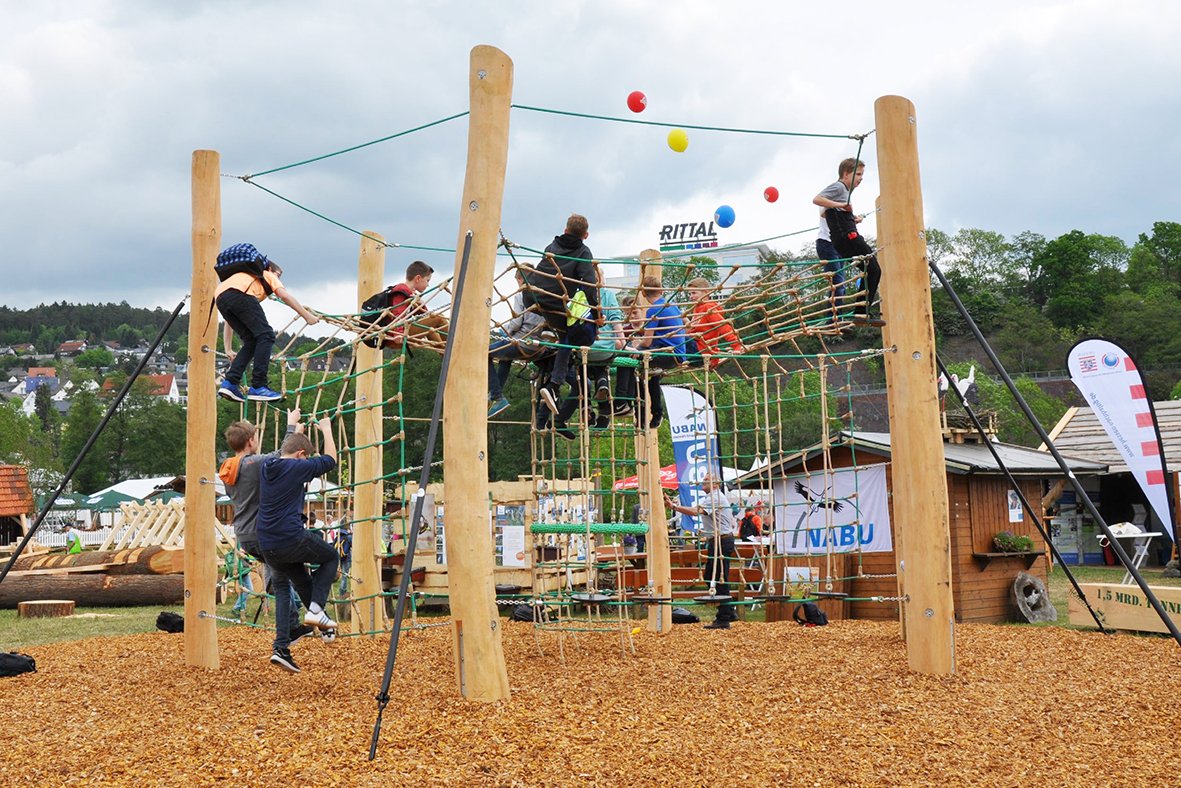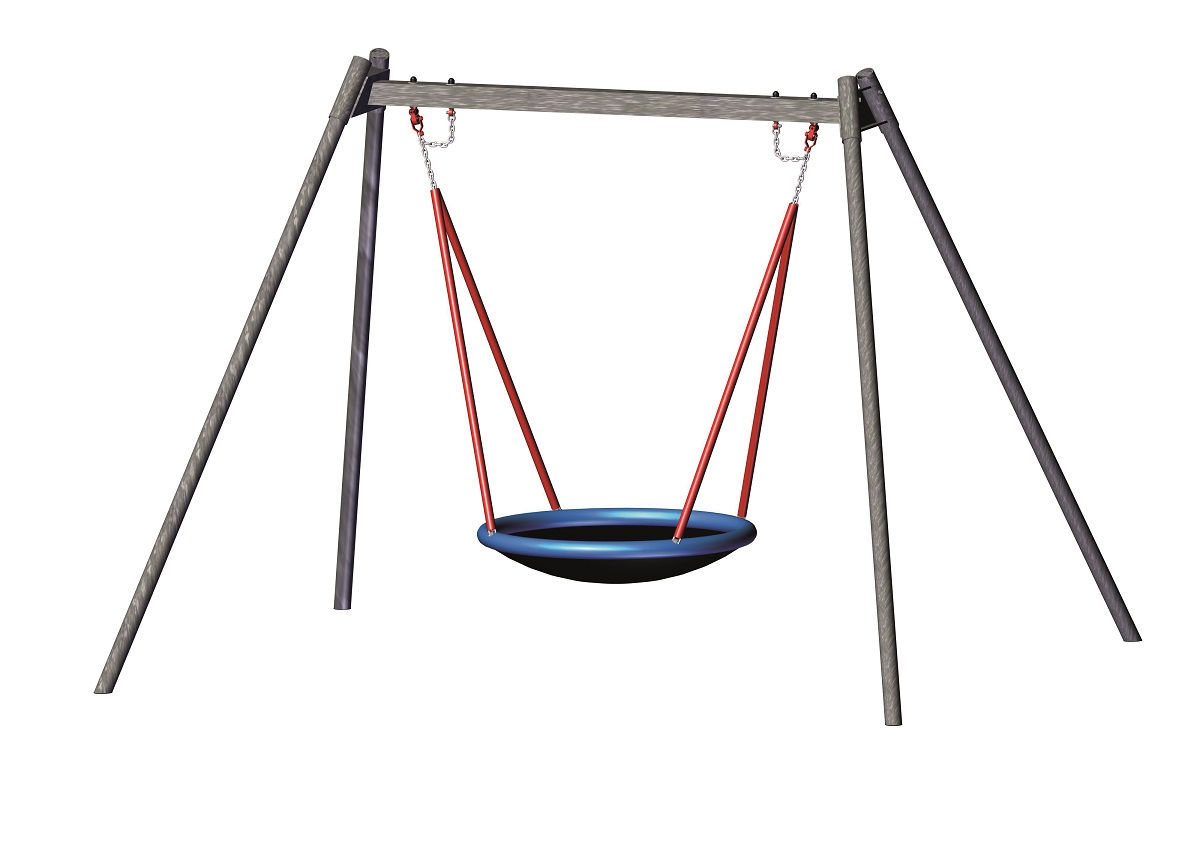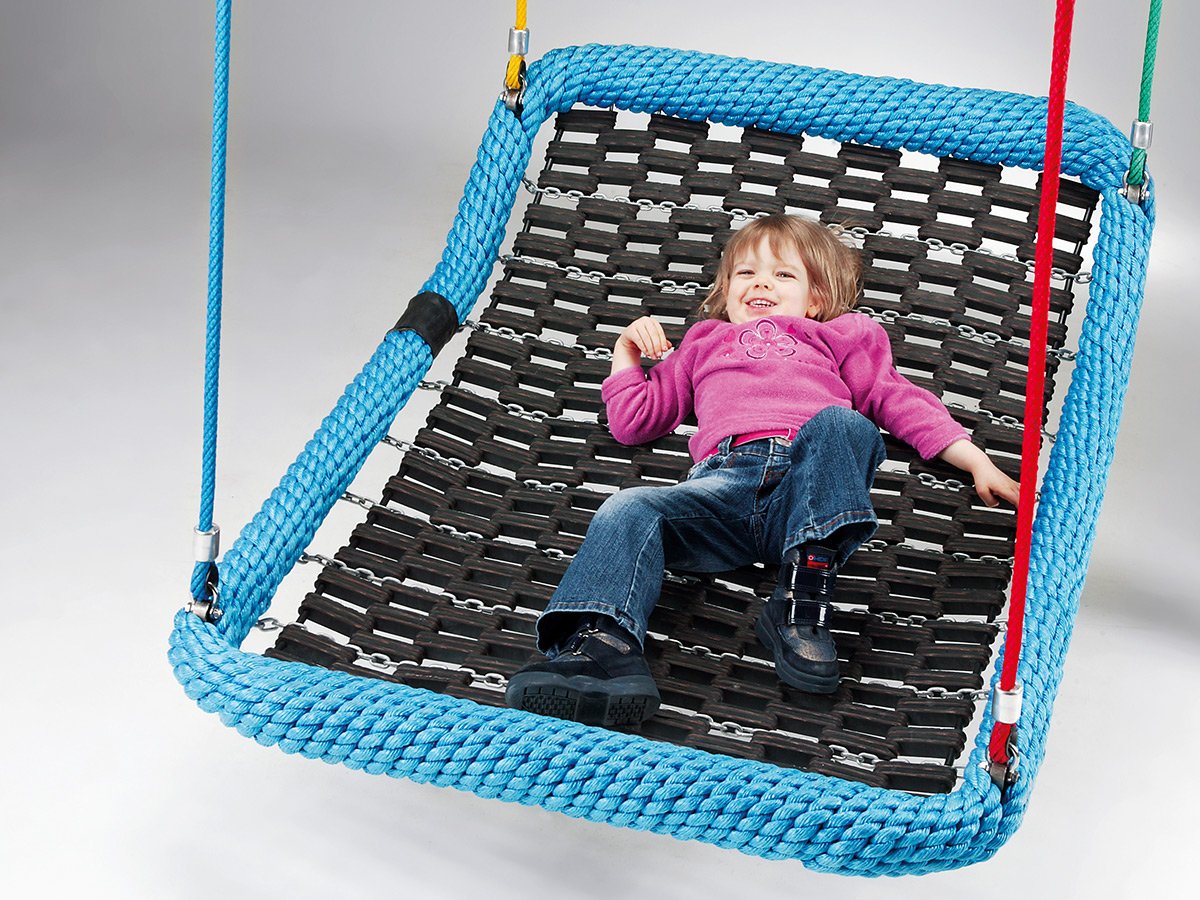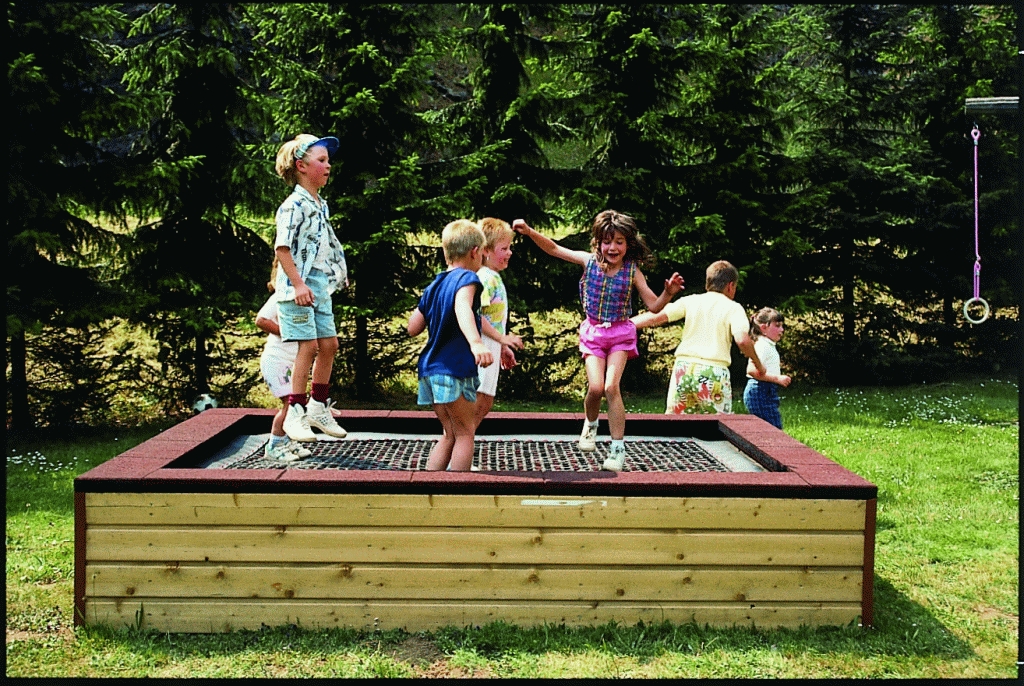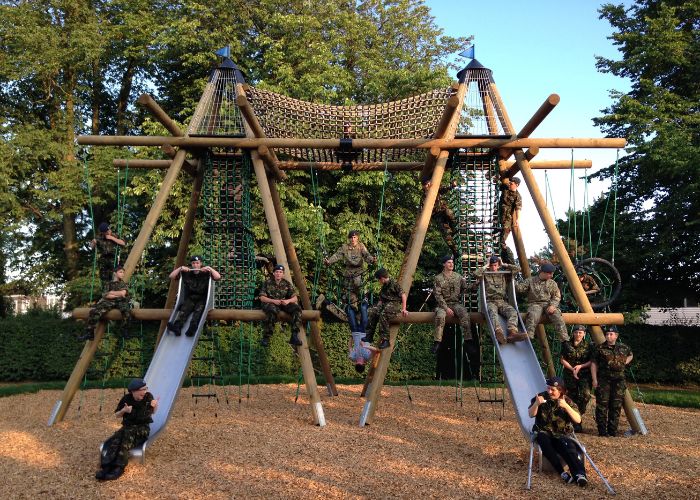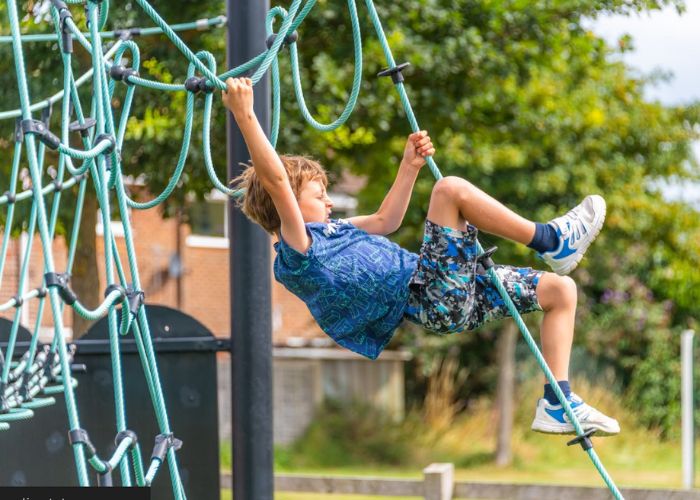Playground Size Requirements for Safe Play
Playground size requirements vary depending on how much space you have available and how many children you expect to use the playground at one time. To help with your planning, we’ve detailed the typical playground sizes below, along with space requirements for equipment.
One of the main bumps in the road you'll hit when planning a new playground is making sure you have an appropriate amount of space available. Playground size requirements help keep the area safe for all children using the equipment, even when it's full.
Having the appropriate amount of space around your play equipment is necessary to avoid accidents in your park and fulfil your legal obligations to prevent legal responsibility for injuries.
Each piece of playground equipment requires a certain amount of space to surround it to ensure appropriate space for children to play and run around without being hit by other children. You also need to consider the size of the playground equipment and any limits for the number of children who can use it.
We've broken down the size requirements by type of playground equipment to make the design process easier.
Playground Safety Regulations UK
Playgrounds in the UK must follow specific safety regulations to ensure children can play safely. These rules cover things like equipment design, surfacing, and overall safety standards.
Playground equipment must meet British and European safety standards (such as BS EN 1176 and BS EN 1177) to ensure it’s strong, at the right height, and properly spaced. The ground surface should also absorb impact to reduce injuries from falls.
Regular playground inspections, maintenance, and risk assessments are key to staying compliant with these safety requirements.
Average Size of Commercial Playgrounds
The size of commercial playgrounds in the UK can vary depending on several factors, including available space and the desired range of play equipment. Here are the average size categories for commercial playgrounds:
1. Small Playgrounds:
- Size: Generally ranges from 100 to 500 square meters.
- Suitable for: Smaller spaces or areas with limited available land.
- Features: Can accommodate a modest selection of play equipment, such as swings, slides, climbing frames, and a small play structure.
2. Medium Playgrounds:
- Size: Typically between 500 and 1,500 square meters.
- Suitable for: Parks, schools, and recreation areas with moderate available space.
- Features: Offers a wider range of play equipment, including swings, slides, climbing structures, tunnels, interactive play panels, and seating areas.
3. Large Playgrounds:
- Size: Generally exceeds 1,500 square meters.
- Suitable for: Parks, leisure centres, and larger public spaces with ample available land.
- Features: Provides a vast array of play equipment, such as multiple play structures, swings, slides, climbing walls, zip lines, sensory play elements, sports areas, and picnic spots.
Contact Huck Play today to kickstart your playground project!
As the UK’s leading supplier of rope-based playground equipment, we can help you create a playground that looks incredible and provides years of fun for children. From small local playgrounds to huge commercial play areas, we’re always excited to work on new projects and bring our expertise to every design.
Playground Size Requirements By Playground Equipment
Playground size requirements aren't one-size-fits-all or an exact science. To make it easier, we've broken down the general size requirements into play equipment categories.
Size Requirements for Swings
| "Junior" Swing Frame | Swing Bed | 2.5m - Long Swing Frame |
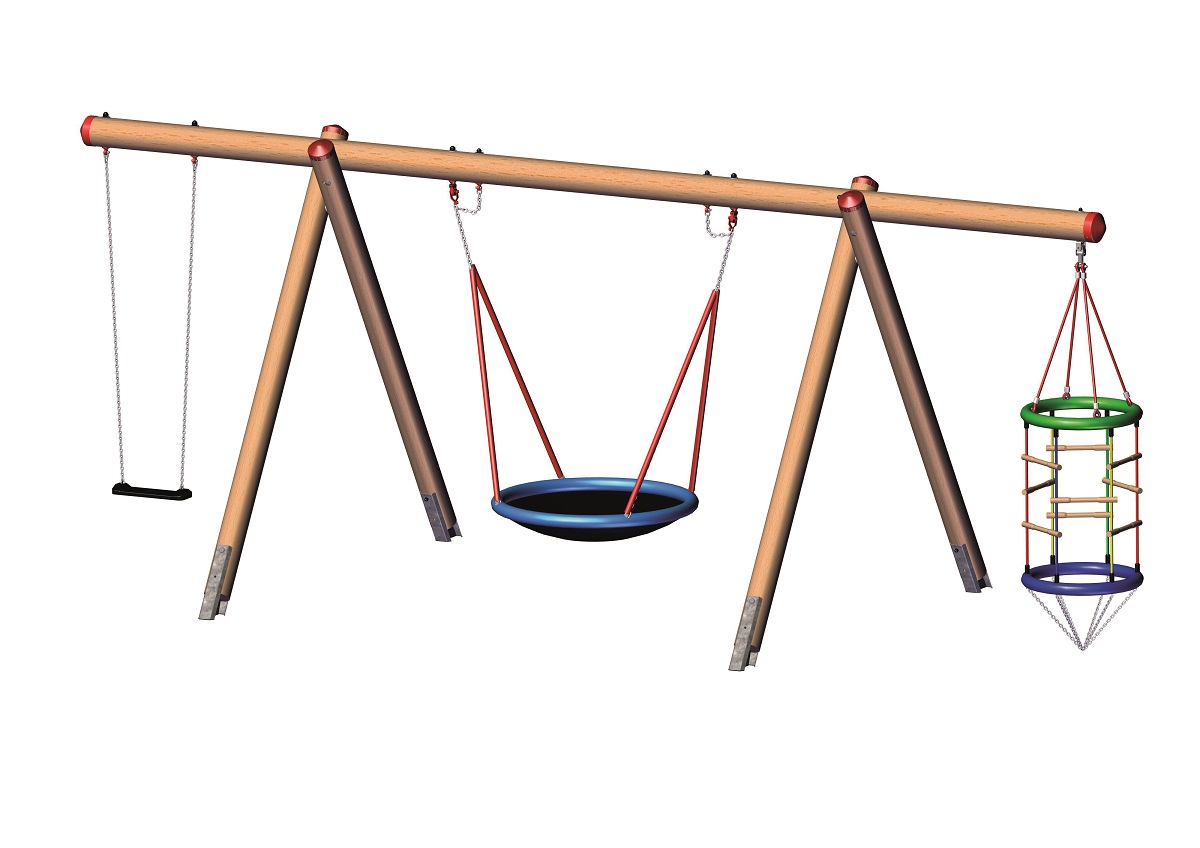 |
When it comes to playground equipment, swings are among the most dangerous for kids who are not using them, so it's important to ensure adequate space for safe swinging.
For single swing frames, like our "Junior" Swing Frame, a minimum clearance of 2 metres (6.5 feet) on each side is recommended. This allows users to swing freely without any obstructions.
For multiple swing frames, like our "Twin" Swing Frame, a wider clearance of at least 6 metres (20 feet) between each set of swings is required to prevent collisions between swinging individuals.
Size Requirements for Trampolines
| "Rolli" Trampoline with Wheelchair Access | Trampoline 2000, freestanding version | “Maximus“ Trampoline 9.00M Long |
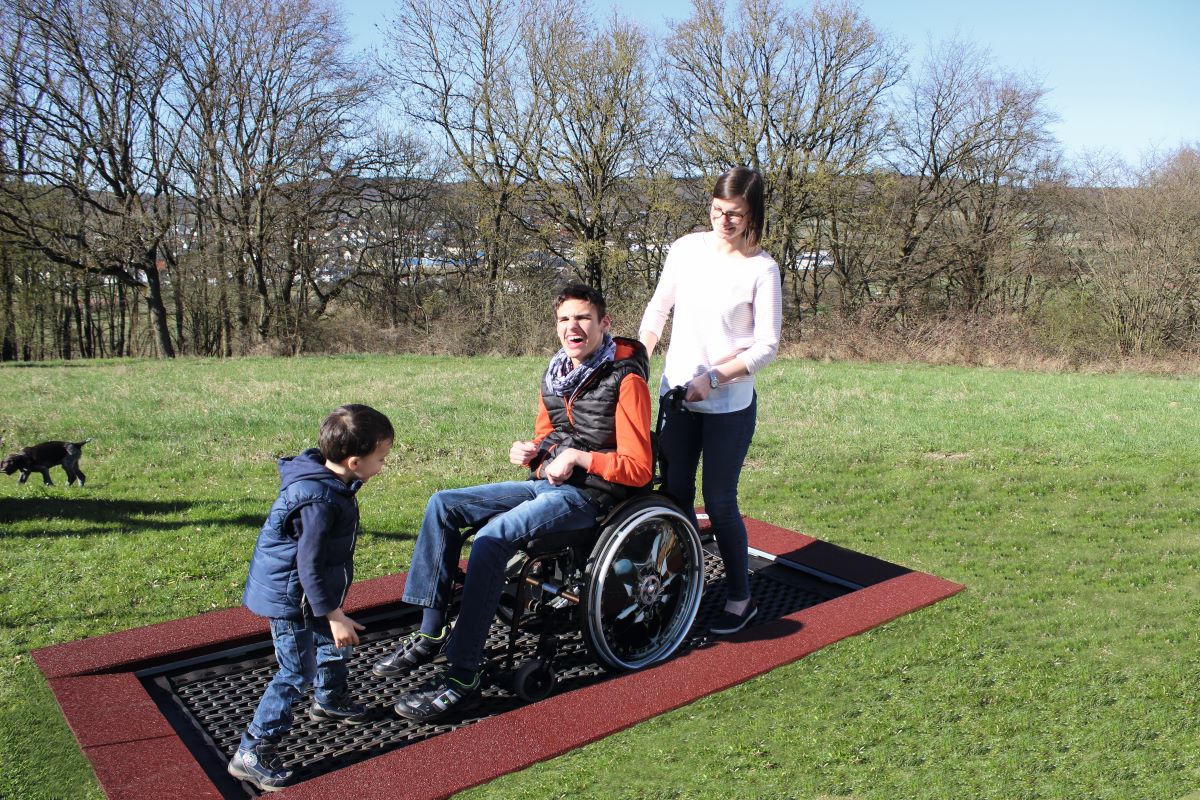 |
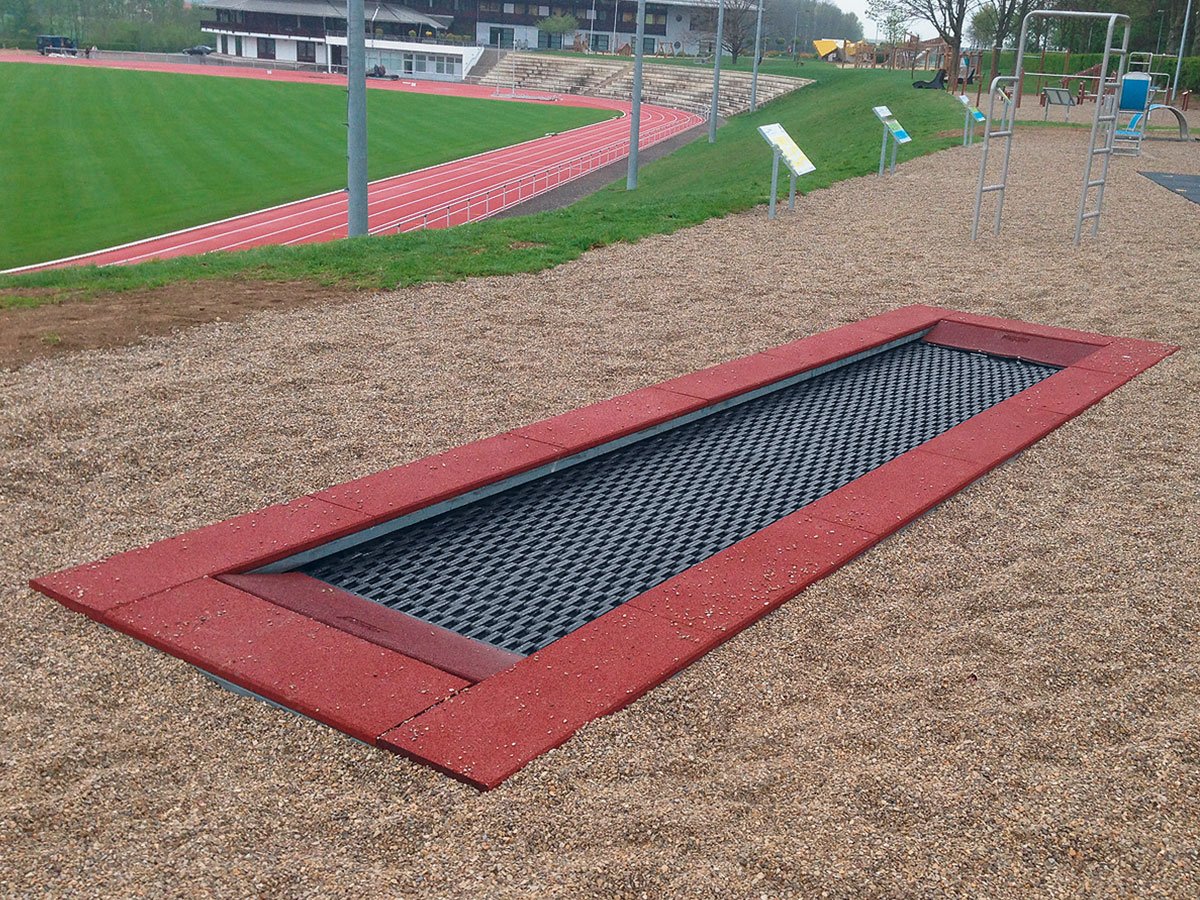 |
To avoid collisions and accidents, it’s recommended to maintain a minimum clearance of at least 2 metres (6.5 feet) between each trampoline or other park equipment. This allows users to jump and land safely without any obstructions.
The size of the trampoline surface is also crucial for safe play. Make sure you select a trampoline that fits the space and can handle the number of children likely to use the park at peak times. For example, our "Saturn" Trampoline can accommodate up to 4 children, while our "Maximus" Trampoline can hold up to 10 children at once.
Note: Make sure that limits on the number of children on a trampoline at one time are clearly sign-posted to avoid accidents from overcrowding.
Size Requirements for Play Towers
| Mini Pirate Tower | Tower bridge | “Black Forest” Bird’s Nest Tower - Steel Version |
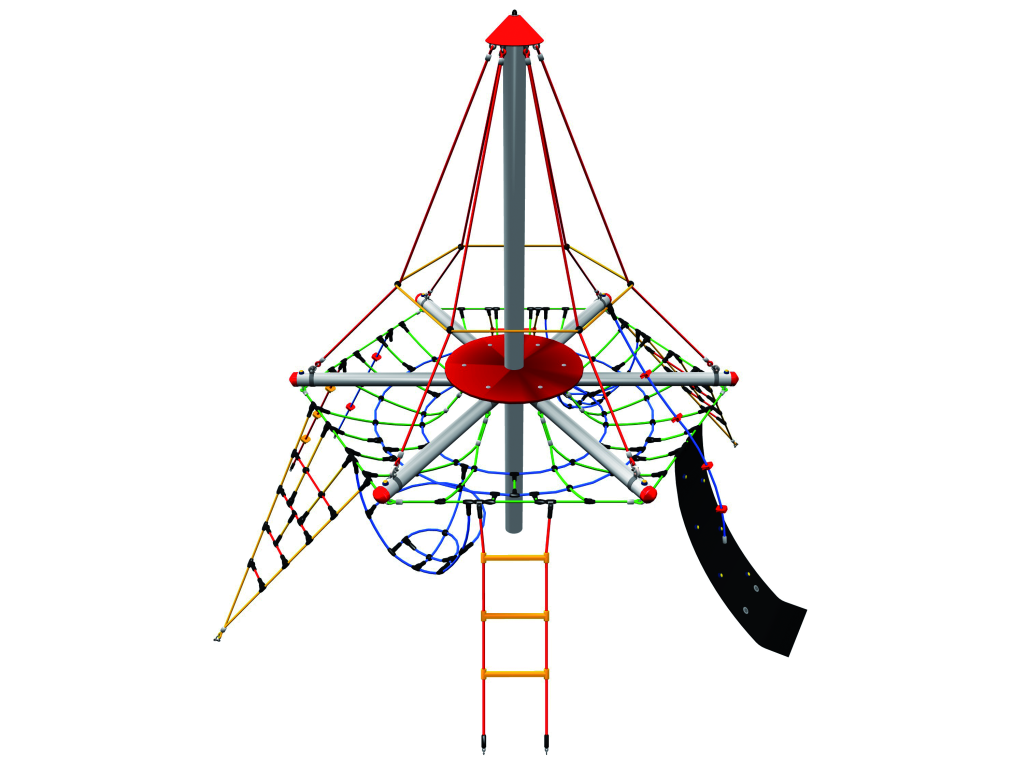 |
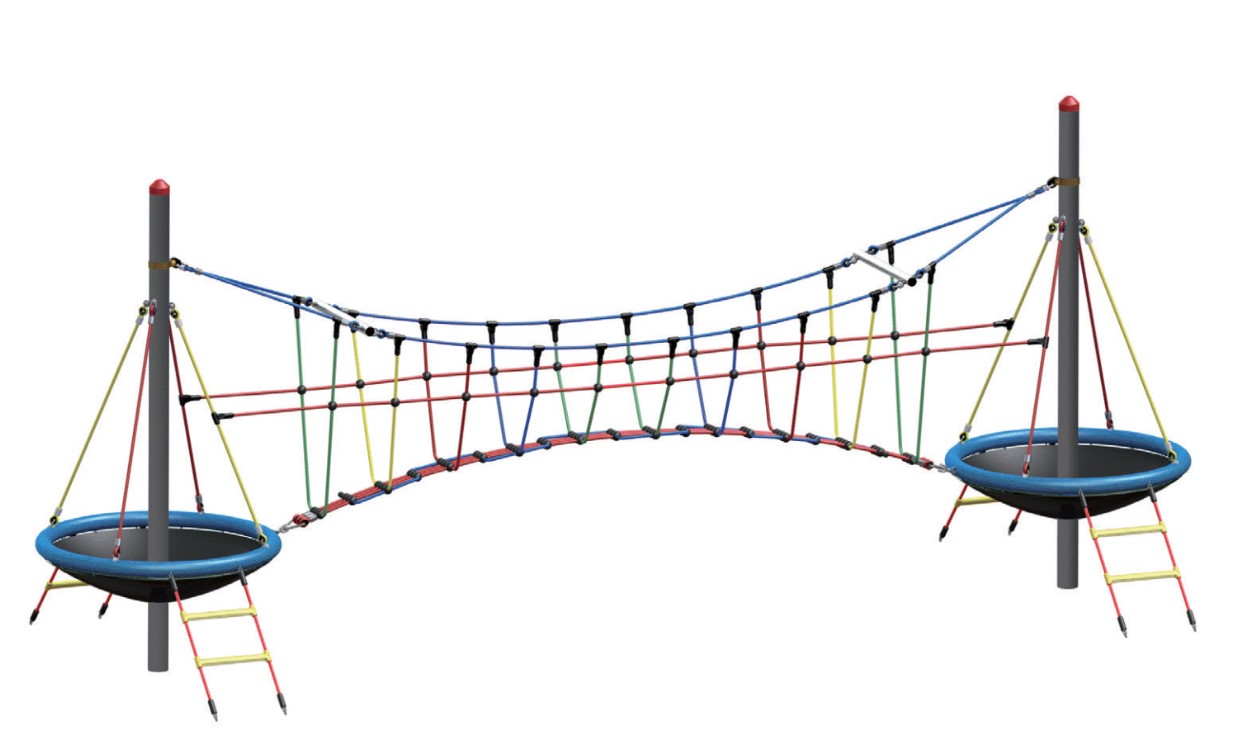 |
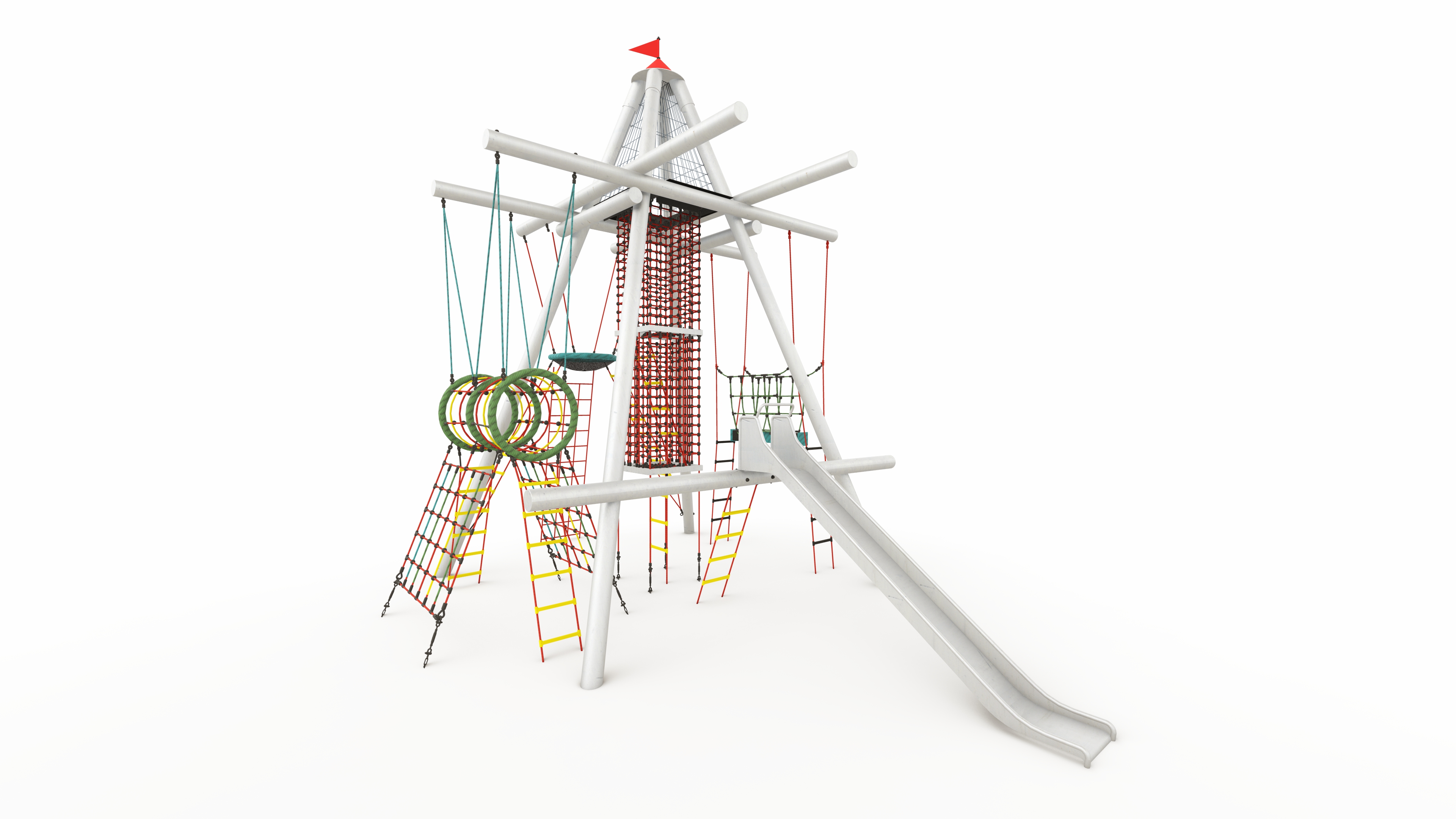 |
To ensure the safety of children playing on play towers, sufficient surrounding space is vital. The recommended guideline is to have a clear zone of at least 6 feet* (2 metres) around the play tower, free from obstacles or hazards.
Different play towers have varying capacities, determining the number of children who can safely play on them at once. These limits must be considered when determining the required space around the play tower.
For example, a play tower designed for 45 children – like our Hexagon Tower – will require more space compared to one designed for 25 children, like our Pirate Tower.
Adhering to the recommended guidelines ensures that there is enough room for children to play safely without overcrowding, reducing the risk of accidents.
*If the play tower exceeds 30 inches in height, this should be increased to 9 feet in all directions.
Size Requirements for Spinning Playground Equipment
| Diablo | Pendulum Seat Combination | Ellipsilon |
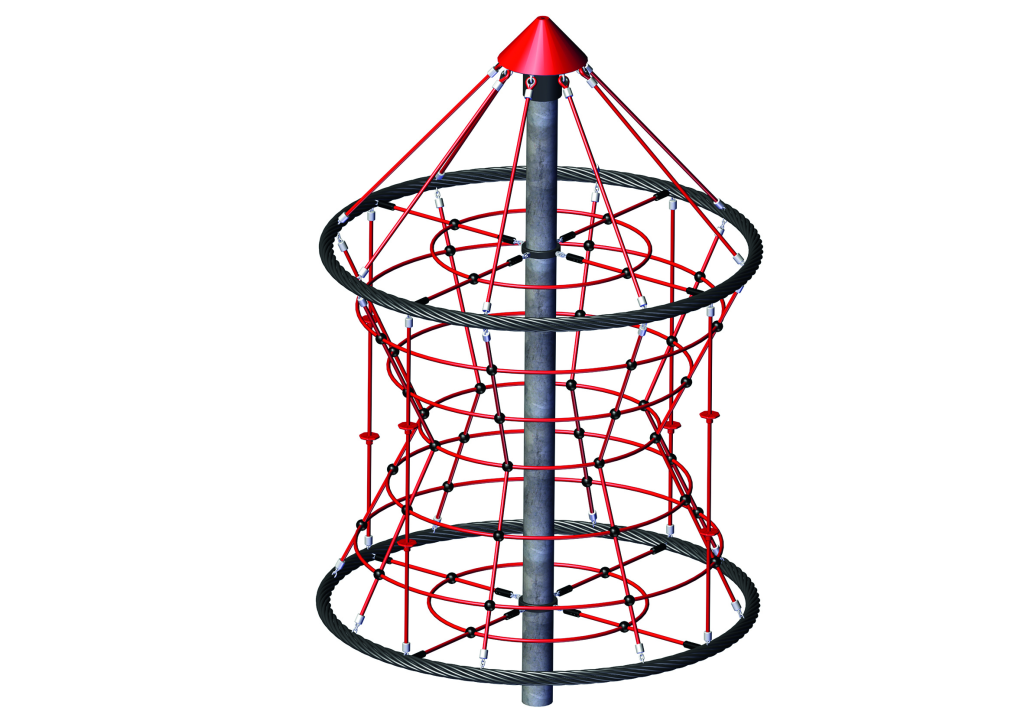 |
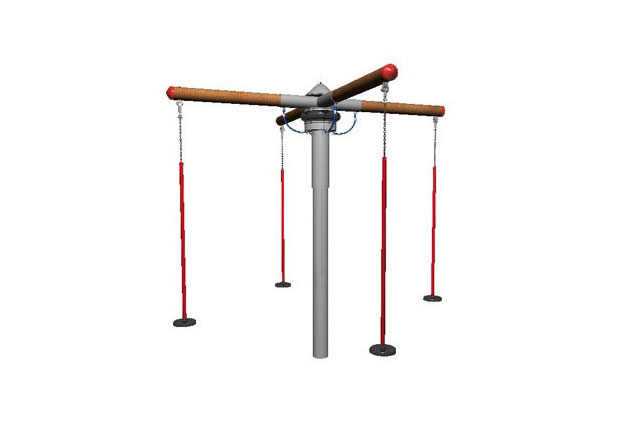 |
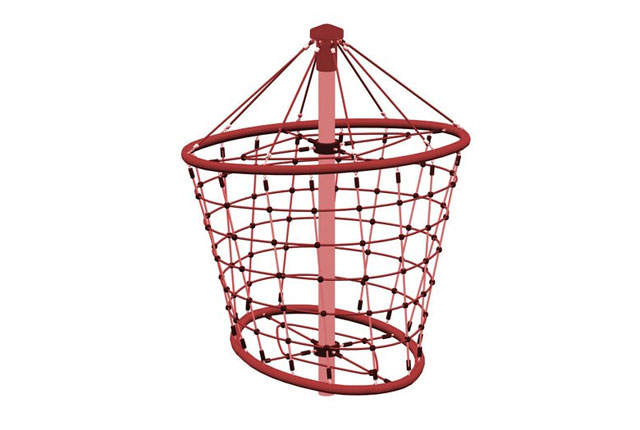 |
When it comes to spinning playground equipment, safety size requirements may differ from other forms of play equipment.
The space needed for spinning equipment, such as merry-go-rounds or our Space Capsule, should consider the radius of the spinning motion to ensure sufficient clearance for children to play safely. This is to prevent collisions with adjacent structures or other children.
It's important to follow recommended guidelines to provide ample space for spinning equipment, reducing the risk of accidents and ensuring a safe and enjoyable play experience that benefits children.
Remember that the larger the piece of equipment, the more clearance room you'll need to make sure your park is safe.
Size Requirements for Equipment With Slides
| Climbing Bench | “Black Beard” Pirate Ship | Birds Nest Tree with Bridge & Spiral Slide |
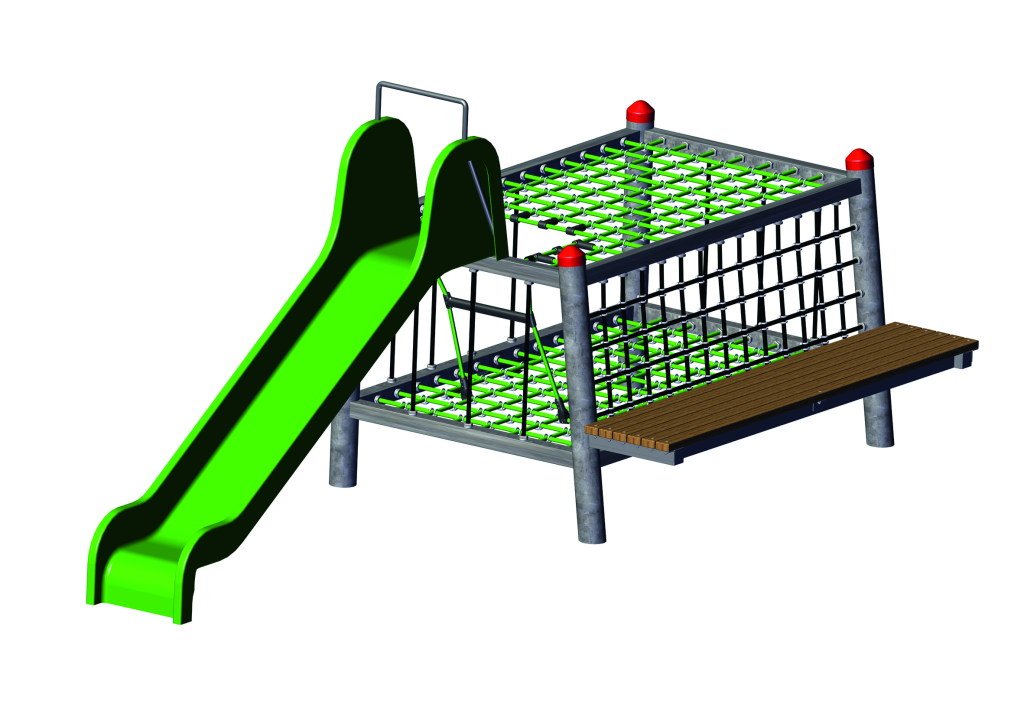 |
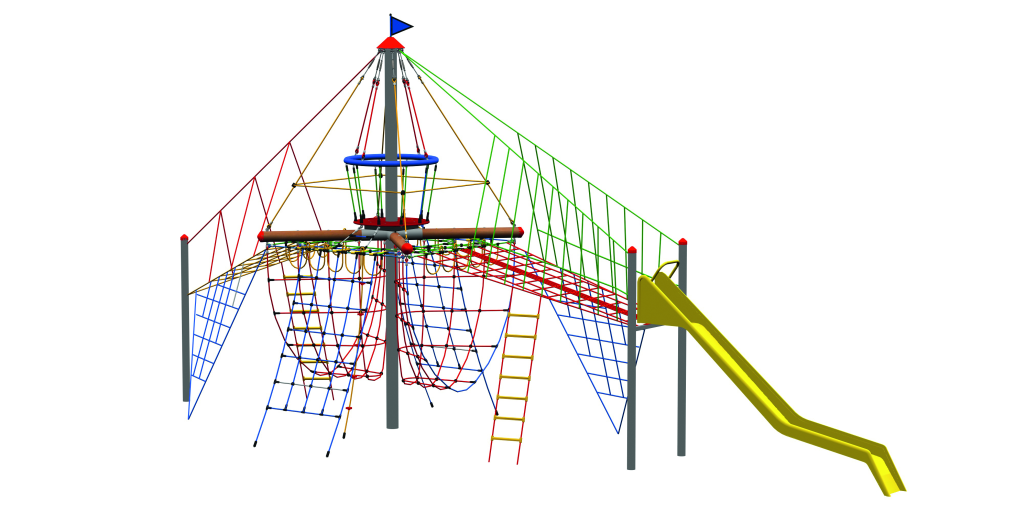 |
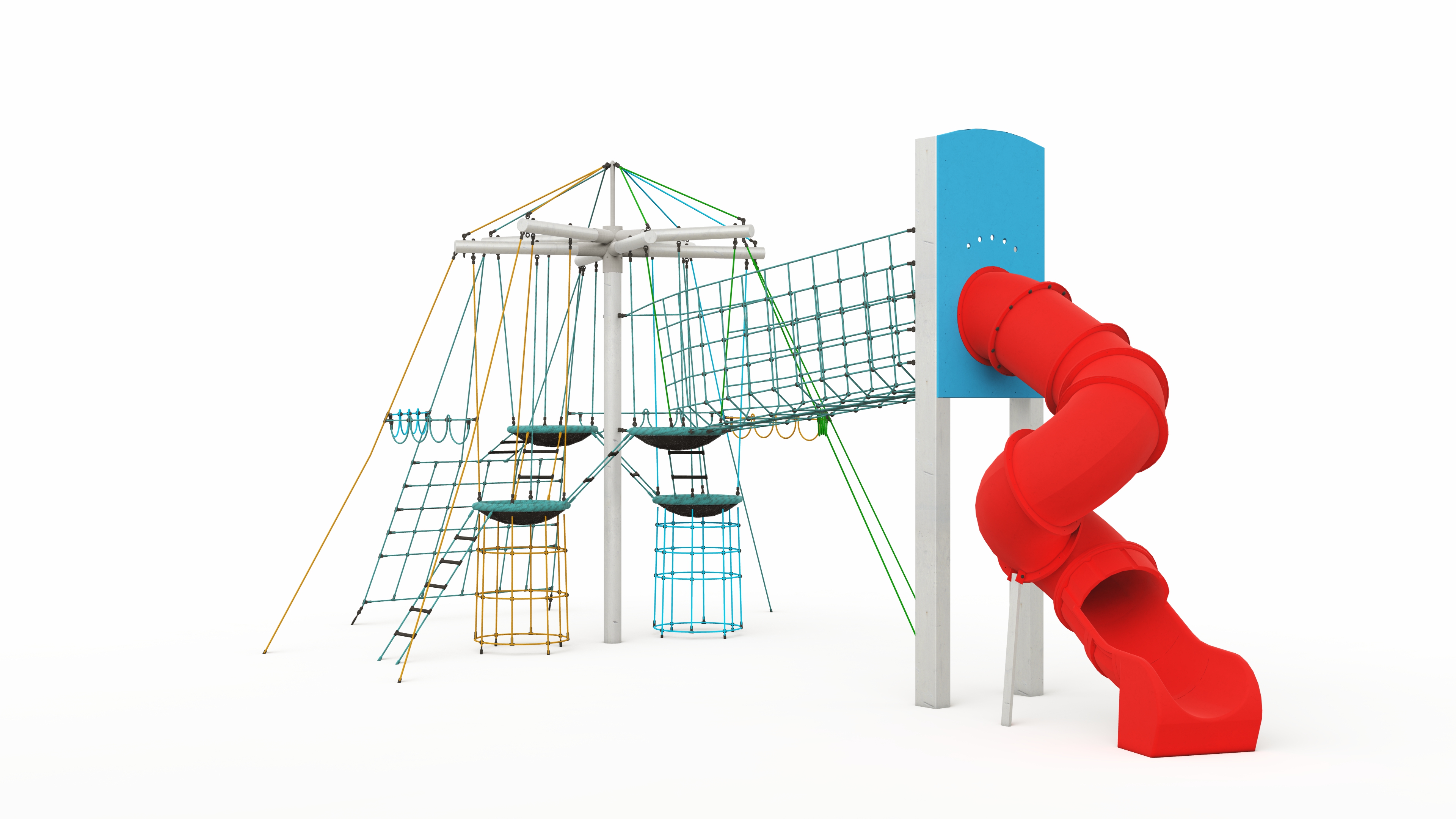 |
When it comes to playground equipment with slides, it's crucial to ensure sufficient clearance at the end of the slide to prevent collisions and ensure playground safety.
The recommended clearance zone size requirement for the end of the slide is typically at least twice the height of the slide. This means that if the slide is 5 feet high, there should be a minimum clearance zone of 10 feet at the end of the slide.
Adequate clearance allows children to safely exit the slide and helps prevent accidents or collisions with other structures or children nearby.
How to Meet Safety Standards With a Small Playground
When working with limited space, it's crucial to make strategic design tweaks to ensure your playground meets safety standards. Here are some adjustments you can consider:
- Compact Equipment Selection: Opt for playground equipment that’s designed to maximise space efficiency without compromising safety. Look for compact play equipment (like the Picolo Trampoline) that fits well within your limited area.
- Optimal Layout Planning: Carefully plan the layout of your playground to make the most efficient use of available space. Consider placing equipment in a way that minimises unnecessary gaps and allows for easy manoeuvring between play areas. This can help maximise usable space while still meeting safety requirements.
- Multi-functional Design: Choose playground equipment that offers multiple play features within a single structure, such as our Play Cube With Slide. This allows you to provide various play experiences while minimising the need for additional equipment.
- Vertical Play Elements: Utilise vertical play elements, such as our range of Play Towers. These features can help make efficient use of vertical space, allowing for more play opportunities in a limited footprint.
By implementing these design tweaks, you can create a compact yet safe playground that maximises the use of your limited space without compromising the well-being and enjoyment of children.
How Huck Play Can Help You Meet Playground Size Requirements
At Huck Play, we know how important it is to meet playground size requirements while making the most of your available space.
As part of our end-to-end service, we can custom-design a playground that maximises space while meeting safety standards and regulations. From layout planning and recommending the right equipment sizes to guidance on spacing and positioning, we’re here to help every step of the way.
With support from Huck Play’s experts, you can be confident your playground will meet all requirements and provide a safe, fun experience for kids of all ages.
Contact Huck Play to Discuss Your Playground Project
If you're ready to create a playground that meets all safety requirements and provides an enjoyable experience for children, don't hesitate to contact Huck Play today. Our team of experts is here to assist you with our comprehensive playground design and installation service.
Get in touch with us today to discuss your playground project and turn your vision into a reality.
FAQs
Is the Number of Children Allowed on Playground Structures Important for Playground Safety?
Yes, the number of children allowed on playground structures is crucial for playground safety. Each structure has a recommended capacity that ensures children can play safely without overcrowding, preventing accidents and enabling proper supervision.
What is a Good Size for a Playground?
A good size for a playground depends on various factors such as available space, intended age group, and desired play activities. It's important to consider both the physical dimensions and functional layout to ensure a safe and enjoyable play environment.
It’s thought that anywhere from 4 to 7 square metres per child is adequate, but this can vary depending on the factors mentioned above.
Does Huck Play Advise on Appropriate Playground Design for Small Spaces?
Yes, Huck Play specialises in designing playgrounds for small spaces. We offer expert advice and innovative solutions to create engaging and safe play areas, regardless of size limitations. Our team will work closely with you to maximise the potential of your available space.
What is the Minimum Space for a Playground?
The minimum space required for a playground can vary depending on local regulations and safety guidelines. But often, small playgrounds are around 100 to 500 square meters in size, which allows for a few play structures, seating areas, and open space for running and playing.


